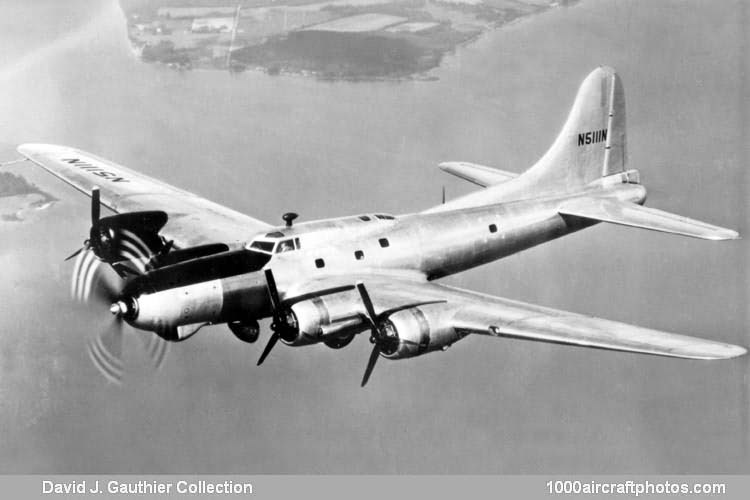12/31/2009. Remarks by Johan Visschedijk: "After WW II, two Vega-built B-17Gs were drastically modified as flying test beds for engines, so a revised Boeing model number of 299Z was assigned to these airframes. The military features were removed, the pilot's compartment was moved aft, and the nose was modified to accommodate the test engine. Each turbo-prop test engine was more powerful than all four standard engines operating together.
The first, s/n 44-85813, was leased to Curtiss-Wright from October 1945, being converted by Boeing in 1946, after which it was designated EB-17G by the USAAC. Test flights with the XT-35 turboprop started in September 1947, tests with the J65 Sapphire jet engine started in 1951. The designation was changed to JB-17G in 1956, while the aircraft was sold to Curtiss-Wright on August 30, 1957, registered as N6694C. Thereafter anR-3350 radial engine was fitted in the nose for propeller research, last engine tested was the T-64G turbine-prop.
Curtiss-Wright sold the aircraft and subsequently it was registered to Ewing Aviation from December 1, 1966, Ewing-Kolb Aircraft from August 15, 1969, Arnold Kolb/Black Hills Aviation from July 30, 1970. The latter had the aircraft fitted with a standard forward fuselage, that was taken from s/n 44-83316, and used it as an aerial tanker, listed as number C12; it crashed near Bear Pen, North Carolina on April 16, 1980.
The wreckage was bought by Tom Reilly Vintage Aircraft in 1985, and parts were used to restore 44-85734/N5111N (mentioned below). The remaining wreckage was obtained for another B-17 project, and is presently registered as N3154S to Tech II, being rebuilt to airworthiness using parts of B-17s, s/n 44-85813, 44-83316, 44-83525, and 44-83722.
The pictured second engine test bed is described on page 6021."
